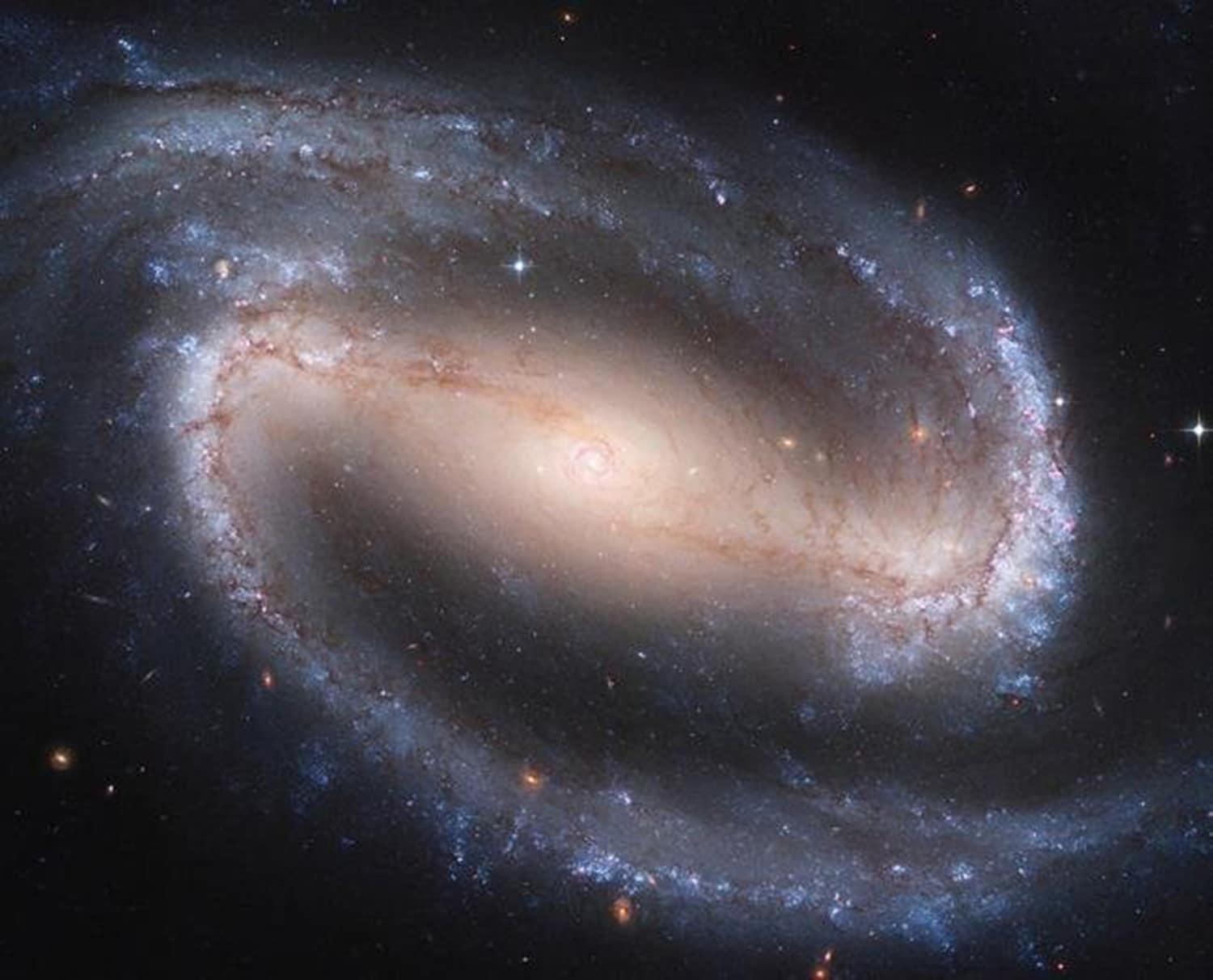
Galaxies with nuclear bars are believed to efficiently drive gas inward, generating a nuclear starburst and possibly an active galactic nucleus (AGN).
Galaxy mergers are believed to be one mechanism that triggers these gas inflows by disrupting the medium.
A less dramatic reason may result from gas streams initiated by galactic rotation and the gravitational instabilities produced by galactic bars, elongated central structures (composed of stars) found in numerous spiral galaxies, including the Milky Way.
However, What happens to infalling gas when it enters a nuclear region remains largely unclear. The reason behind this is the very high obscuration around galactic nuclei that makes optical observations challenging. Hence, astronomers have to rely on data from far-infrared and submillimeter wavelength observations, which can penetrate the dust, although longer wavelength imaging typically lacks the high spatial resolution needed.
Infrared spectroscopy could be a solution to this. Using Infrared spectroscopy, astronomers can address the abovementioned difficulties.
Radiation not only penetrates the dust, but the strengths and shapes of spectral lines can also be modeled to infer even small dimensions as well as temperatures, densities, and other characteristics of the emitting regions.
Recently, astronomers from Harvard-Smithsonian Center for Astrophysics have modeled infrared spectra of water vapor from the nuclear region of the ultraluminous galaxy ESO320-G030. The galaxy, which emits about one hundred times as much energy as the Milky Way, lies about 160 million light-years away.
For this study, astronomers used data from observations made using the Herschel Space Observatory and the ALMA submillimeter facility. They found that the galaxy shows no signs of AGN activity or having been in a merger. But it offers a clear and complex central bar structure and infalling gas that was previously discovered through infrared spectroscopy.
The astronomers observed and modeled twenty spectral features of water vapor, enough diagnostic lines to model the complexity of the emitting regions. The successful results required a three-component nuclear model: a warm envelope (about 50 kelvin) about 450 light-years in radius within a second component, a nuclear disk about 130 light-years in radius, and finally a much warmer compact core (100 kelvin) about 40 light-years in radius.
All these three components alone emit nearly 70% of the galaxy‘s luminosity from a starburst making about 18 solar masses of stars a year.
The mass inflow rate into the region is equivalent to the star creation—around 18 solar masses each year. Along with these results about the nuclear region, the space astronomers use their best-fit outcomes to show effectively 17 other molecular species (other than water) found in the far-infrared spectra, including ionized particles and carbon and nitrogen-bearing molecules.
After combining results, particularly the extremely high abundance of ionized molecules, astronomers discovered powerful the strong presence of enhanced ionizing cosmic rays.
Journal Reference:
- Eduardo González-Alfonso et al. A proto-pseudobulge in ESO 320-G030 fed by a massive molecular inflow driven by a nuclear bar, Astronomy & Astrophysics (2020). DOI: 10.1051/0004-6361/202039047
Continue reading Modeling infrared spectra of water vapor from the nuclear region of the galaxy on Tech Explorist.
0 comments:
Post a Comment